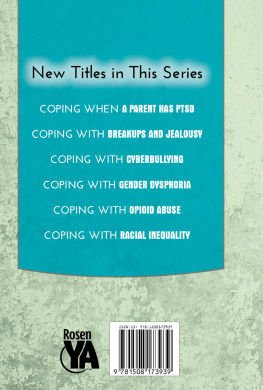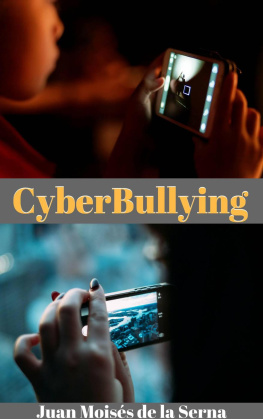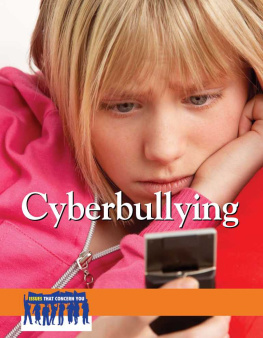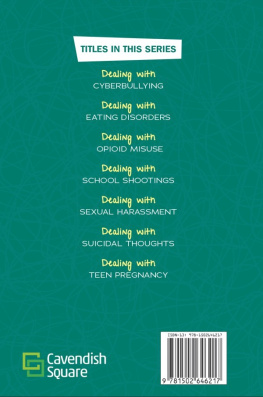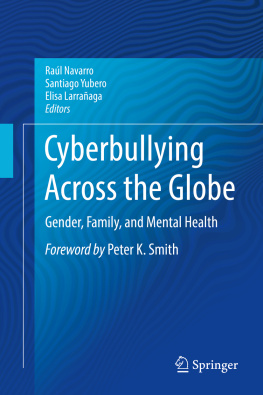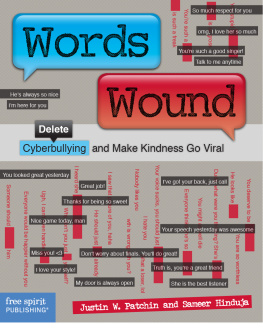1. Cyberbullying: Definitions and Facts from a Psychosocial Perspective
School coexistence is one of the main objectives that schools must pursue in at least two ways: (1) an objective on school coexistence must be formulated to allow good interpersonal relationships among all members of schools and (2) in parallel, the objective must make achieving all other scholarly objectives possible. Consequently, we must make every necessary effort to face all the obstacles and problems that make a suitable and positive school life difficult. These obstacles include violent conduct, which also causes much harm and suffering to many young and adolescent students, among which bullying and cyberbullying stand out. This chapter centers on analyzing cyberbullying as an extremely harmful psychosocial phenomenon for not only children and adolescents but also for positive school life. The reason why we face this phenomenon is because numerous adolescents have committed suicide in several countries worldwide. So, we must systematically study it if we want psychology to become a real solution to social problems and to alleviate peoples pain and suffering. The gravest aspect is that victims, who have committed suicide, have made us aware of the seriousness of this matter. This was the case of a 13-year-old boy called Ryan who committed suicide in the USA on October 7, 2003. It was not by chance that considering conducting research into cyberbullying began systematically since 2004 (Smith ). Since then, we have studied the reasons why some schoolchildren get involved in cyberbullying, its negative effects, what it shares, or does not share, with traditional bullying, the prevalence of such harmful conduct or ways to prevent it. This chapter attempts to review the current situation of this particular matter.
It is quite surprising that although since 1992 violence at school has never stopped diminishing (Robers et al. ), there is increasing concern about bullying, and of both the traditional and online kinds (see Giumetti and Kowalski in this volume). This reflects an insecure and intimidated society. Let us not forget that the most important aspect is the suffering of thousands and thousands of victims, who are normally adolescents.
It is well known that many episodes of bullying, humiliation, and violence by students at school have appeared in the news in the past 1012 years, and that these students employ new communication technologies to this end, above all the Internet and cell phones (Li ).
Bullying already existed much earlier before the Internet and cell phones appeared. Young and adolescent students, and also more and more children, have used the new technologies to bully others, basically because these media provide them with this facility (or that is what they believe) to attack but remain anonymous (anonymity) , which other cyberbullying aspects facilitate: not seeing the victim, nor his or her pain and suffering caused by bullying conduct . So, it is much easier for them to keep a moral distance from their victims. This means feeling less regret and having fewer scruples when harming someone else. So, it is not surprising that cyberbullying prevalence rates have never stopped rising.
Finally, we wish to add that a considerable number of chapters similar to the present one are available, but we wished to include a more psychosocial orientation that includes the reality that cyberbullying is a phenomenon that is understood only in a context that is group-like, family, school, community and cultural.
1.1 The Internet Galaxy and Cyberbullying
Although the Gutenberg Galaxy is still present, it is obvious that we now live in another era known as the Galaxy Internet (Castells , p. 15), The Internet is the fabric of our lives. If information technology is the historical equivalent of what electricity represented in the industrial era, in our era we can compare the Internet with the electric grid and the electric motor given its capacity to distribute the power of information to all areas of human activity. Therefore, it is for the right and wrong. More specifically, Castells adds (p. 20), the elasticity of the Internet makes this means particularly suitable to stress our societys contradictory trends. The Internet is neither a utopia nor a dystopia, but a means we express ourselves inby a specific communication code that we must understand if we intend to change our reality. So, in a violent society, people will use the Internet to attack and bully others, while a caring and altruistic society will use it to help others. So, right and wrong does not lie in the Internet, but in the way we use it.
However, the Internet is here to stay. So, we must do whatever we can to increase its positive effects, and there are many, and to cut its negative effects and risks to a minimum, of which there are also many, above all in the field of social interaction with young people and adolescents. Largely, they will depend on the cultural and ideological background in which they live. Nowadays, the dominant cultural pattern is none other than neoliberal capitalism, that is, the neoliberal globalisation ideology (see Ovejero ). The features of this neoliberal ideology (selfishness, individualism, social Darwinism, fatalism, competition of everyone against everyone, internalization of the idea that benefit is all that matters), especially internalized by adolescents, are difficulting a suitable coexistence among people, even in the Internet, in at least two directions: it is quite likely that more and more people show less empathy to peers, which may promote cyberbullying; on the contrary, behaviors to defend and help victims may become less and less likely, which also may increase victims pain. In this way, it is not surprising that cases of cyberbullying have increased so much. In only 10 years, the world of electronic communications has dramatically changed as we now find many other forms of electronic communication (chat, text messages, etc.), which makes the problem even worse, given the frequent diffusion of episodes that harm some people on web pages such as YouTube or MySpace, where thousands of people act as constant witnesses of the jokes or humiliation that victims are targets of. In the most serious cases, participation in such episodes has led a victim to commit suicide, and news items have a huge social repercussion which, at the end of the day, allows growing interest in this phenomenon.
Over the past 1012 years, cyberbullying has appeared as a new form of violent conduct in the electronic communication context as the result of the vast communication possibilities that progress in electronics has enabled, especially among increasingly younger adolescents (Noret and Rivers ) discovered that a relationship exists in the first stage of adolescence between skills for using the Internet and cyberbullying conduct.
It is also a fact that adolescents increasingly employ social networks, such as Twitter or Facebook (Duggan and Smith ).


